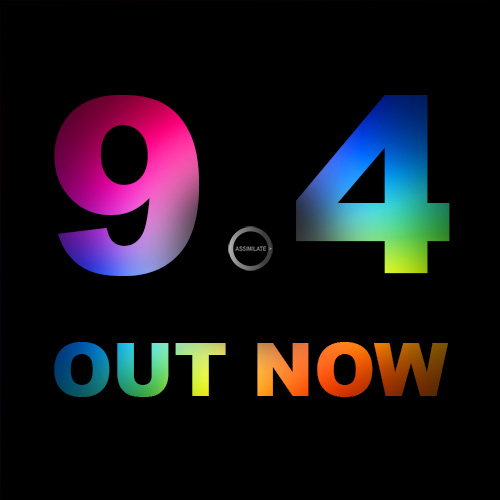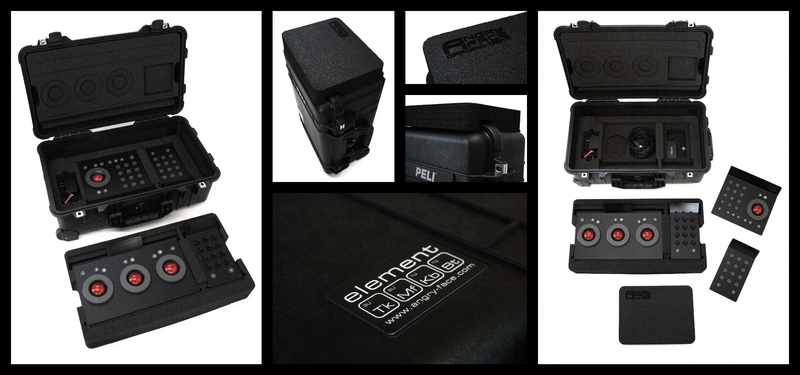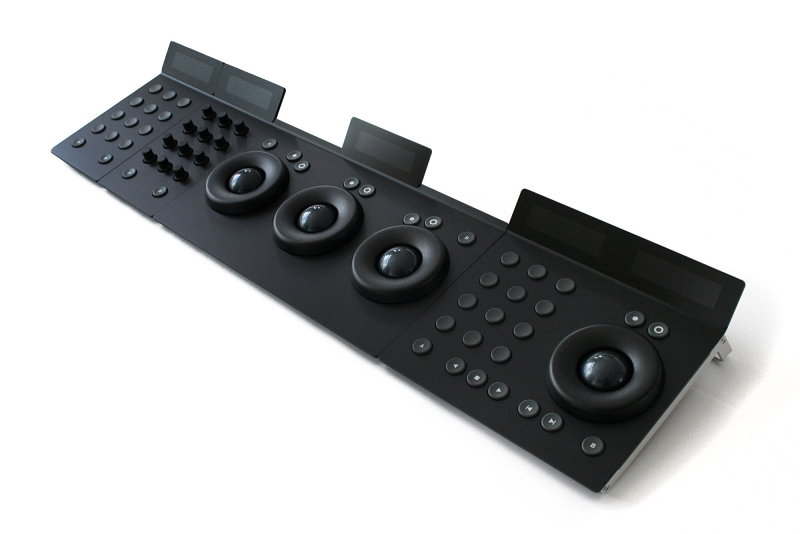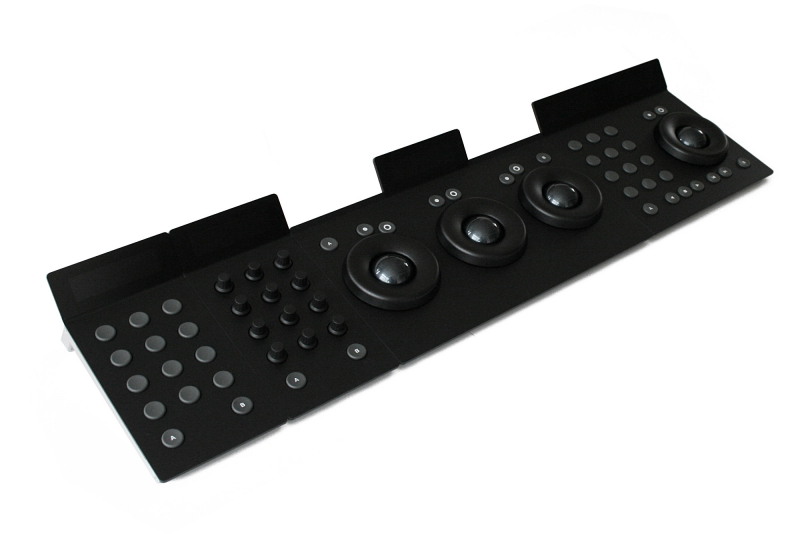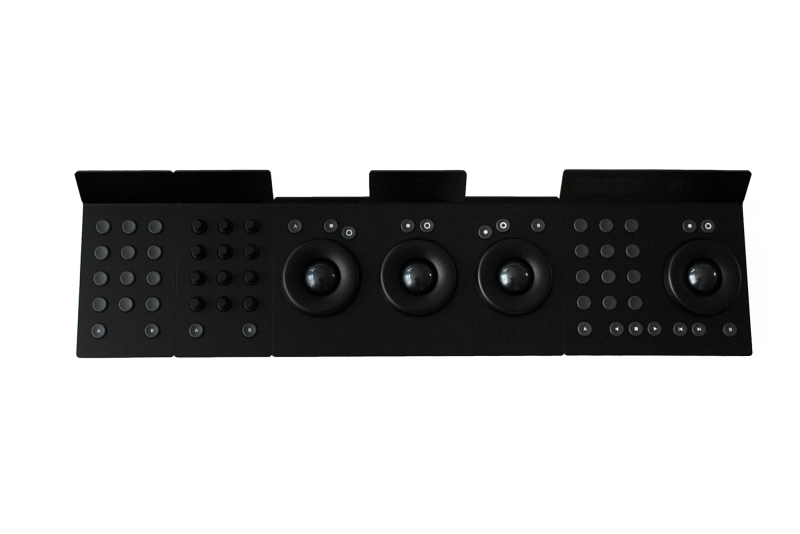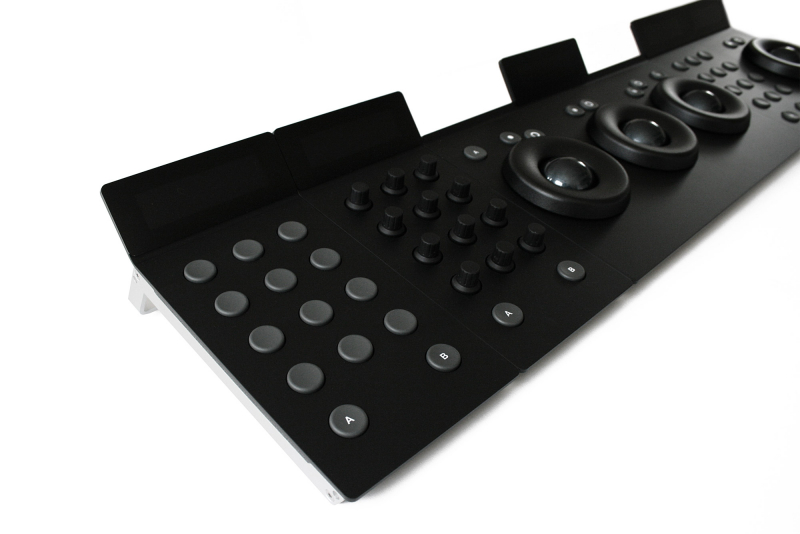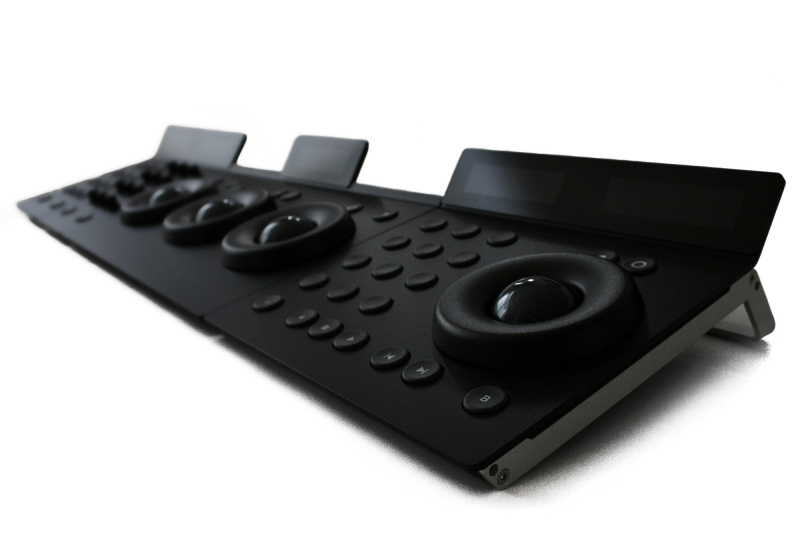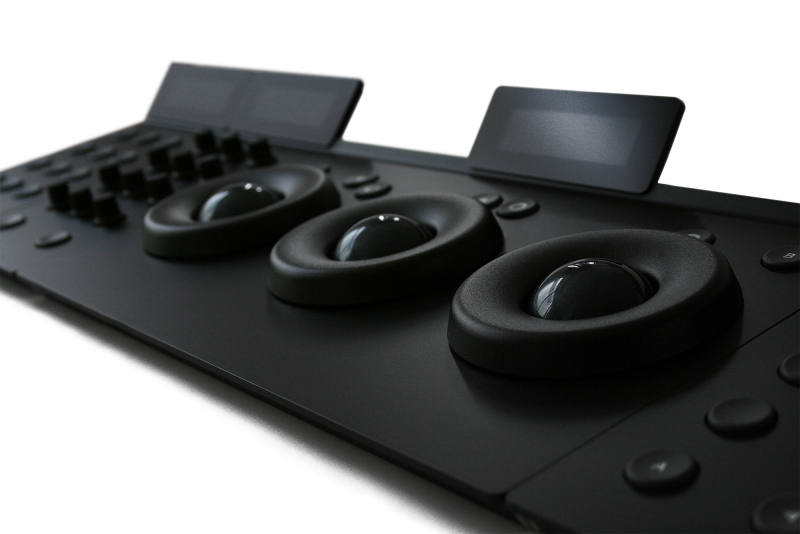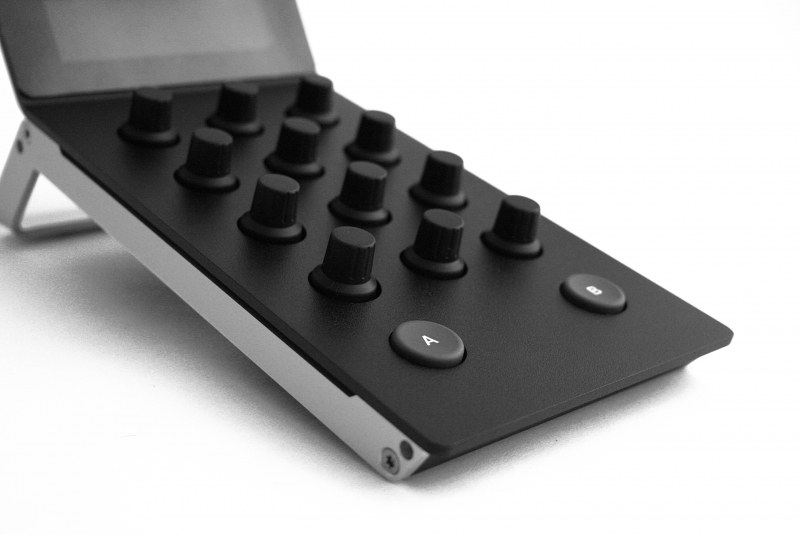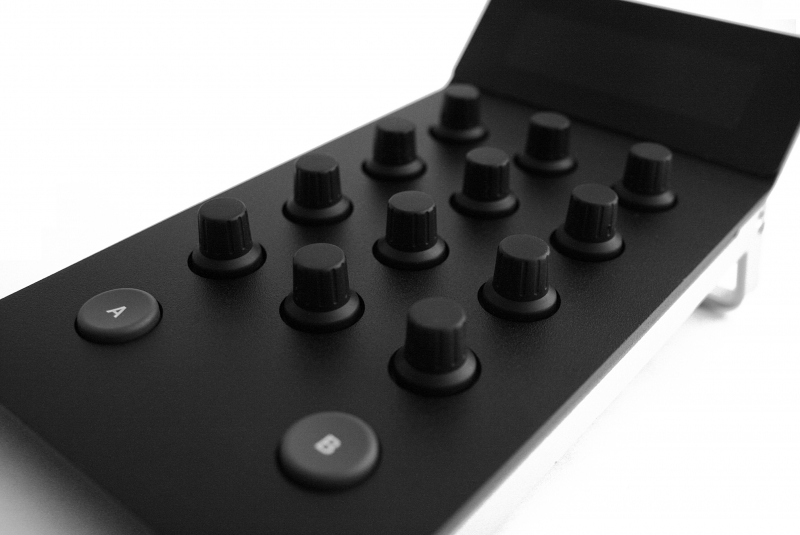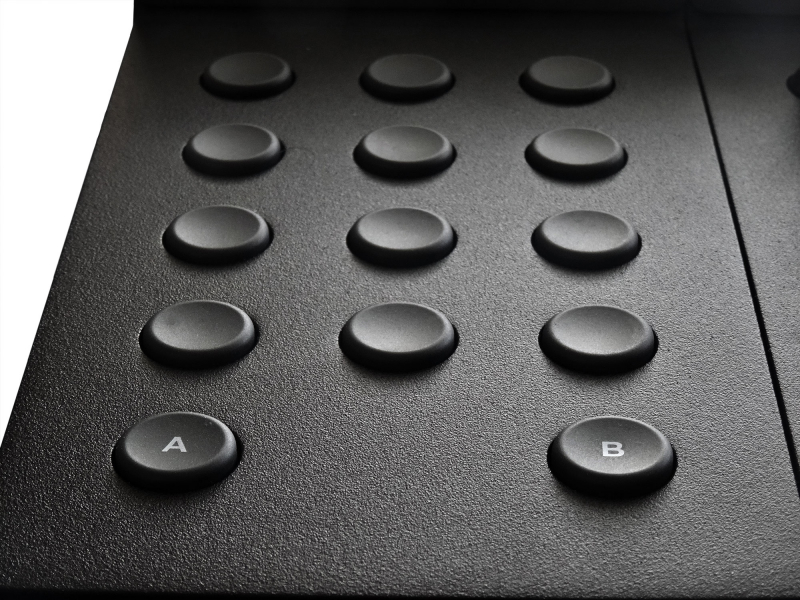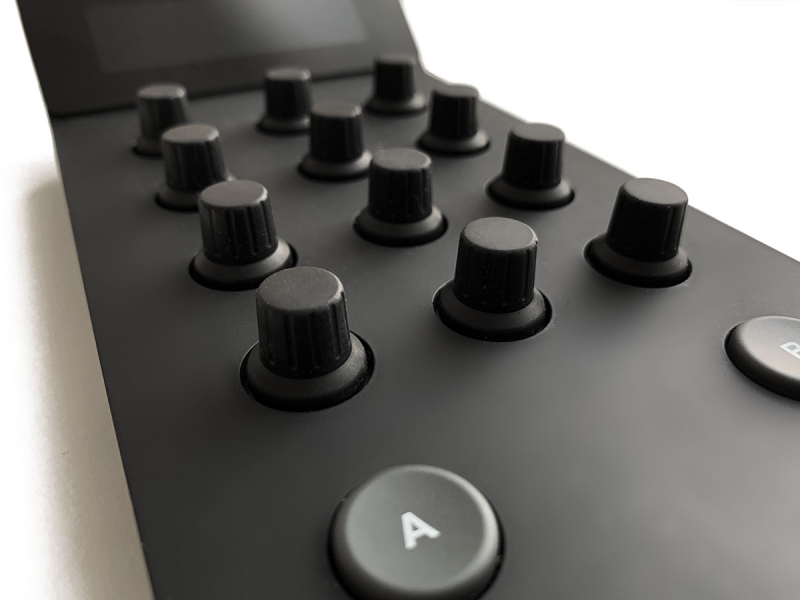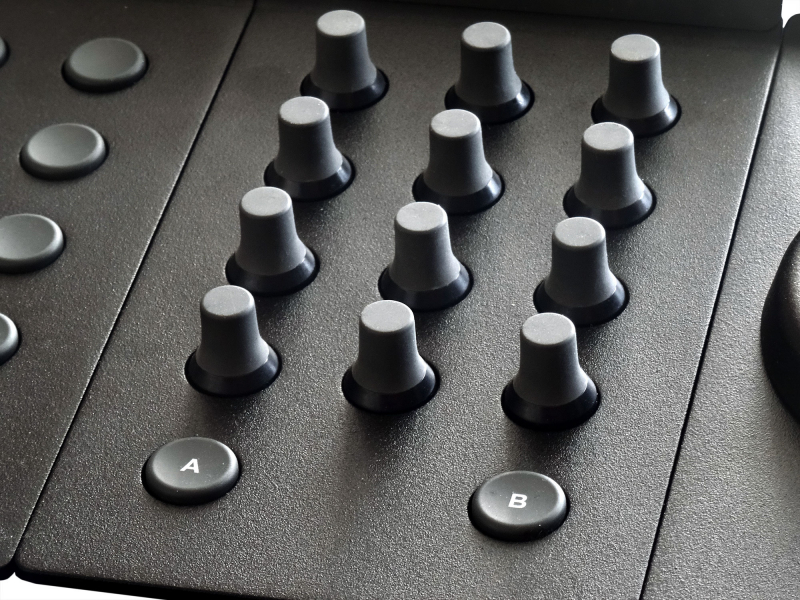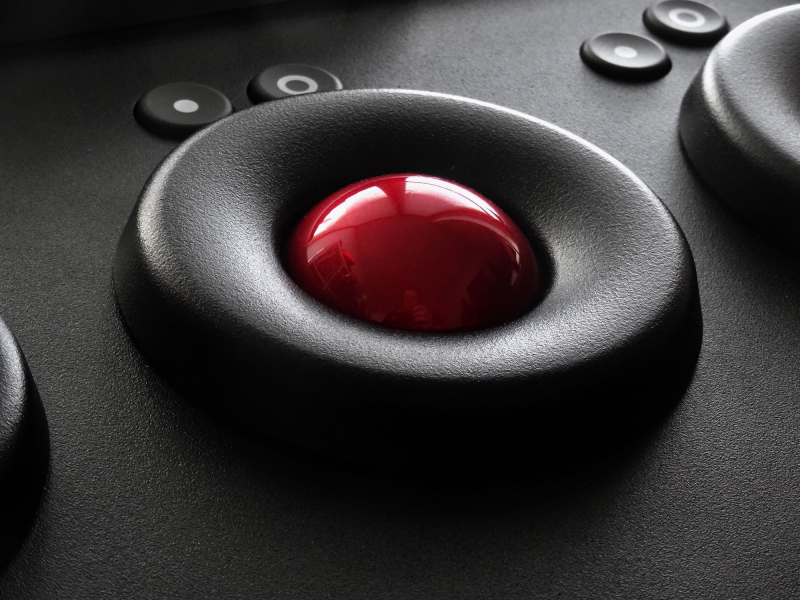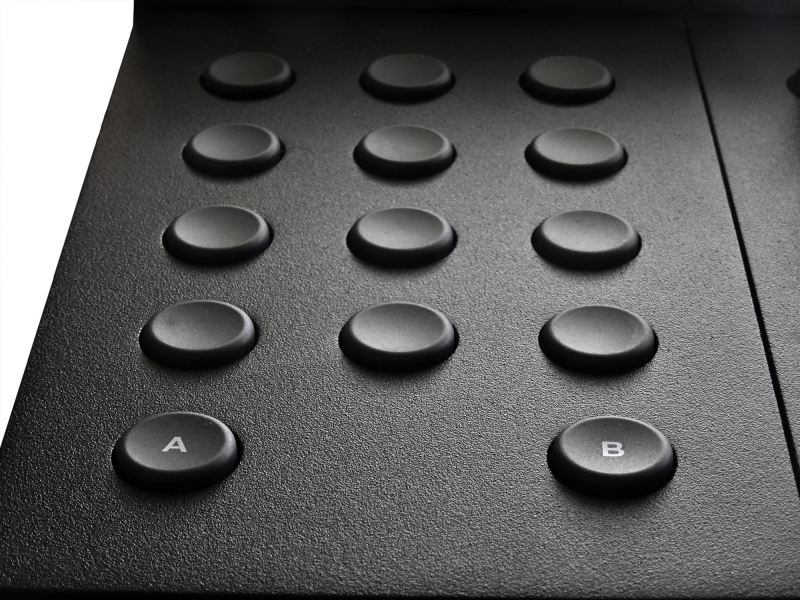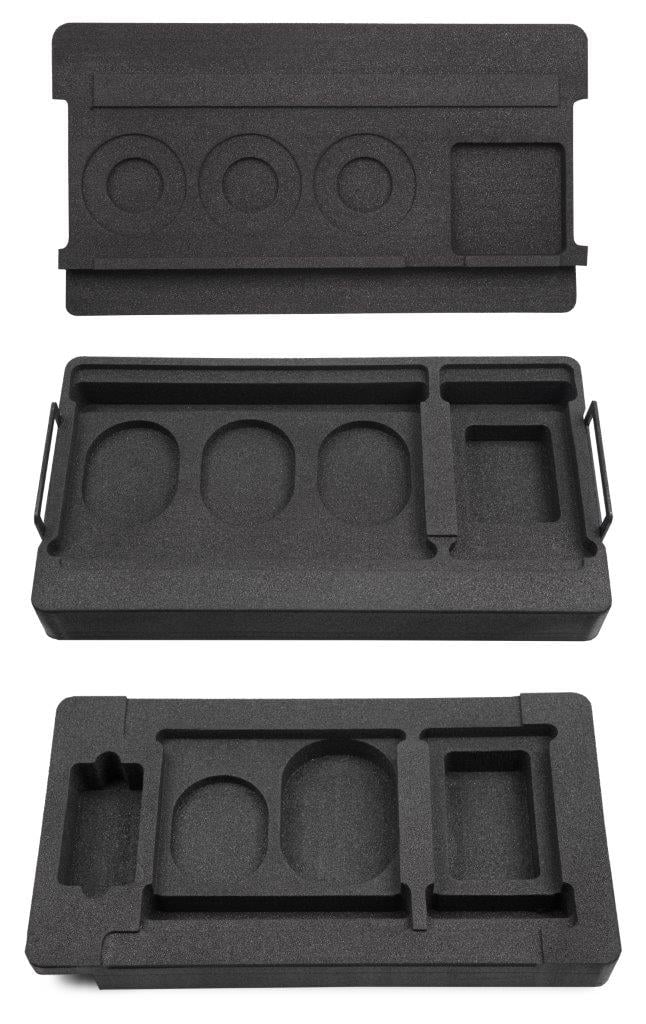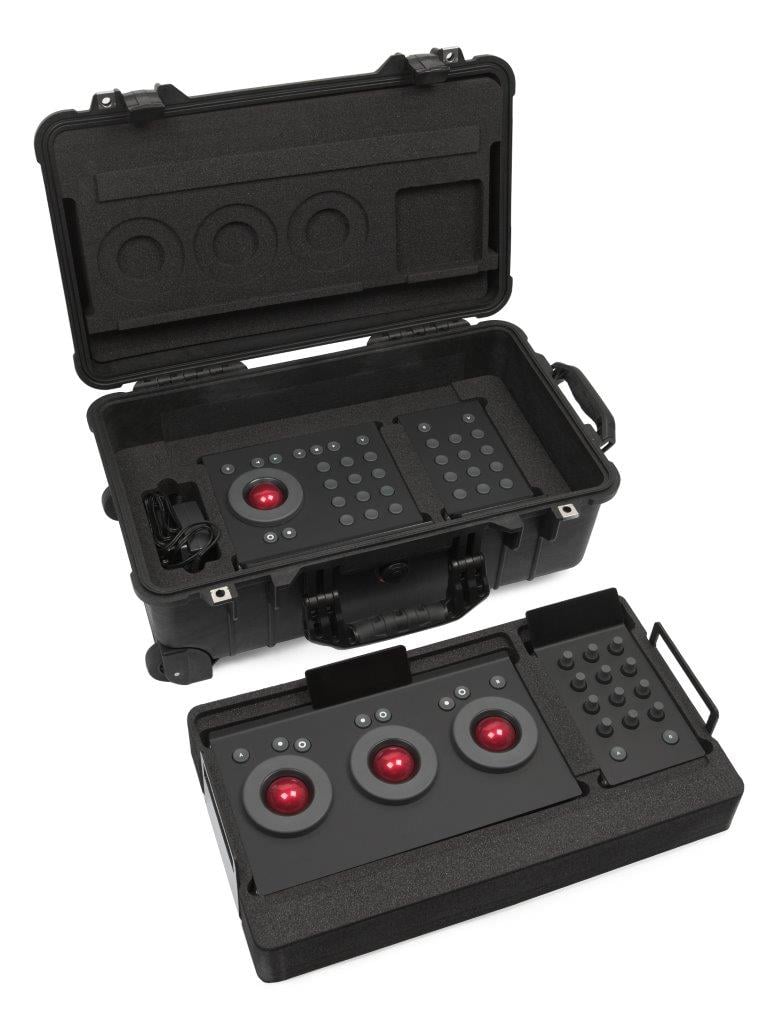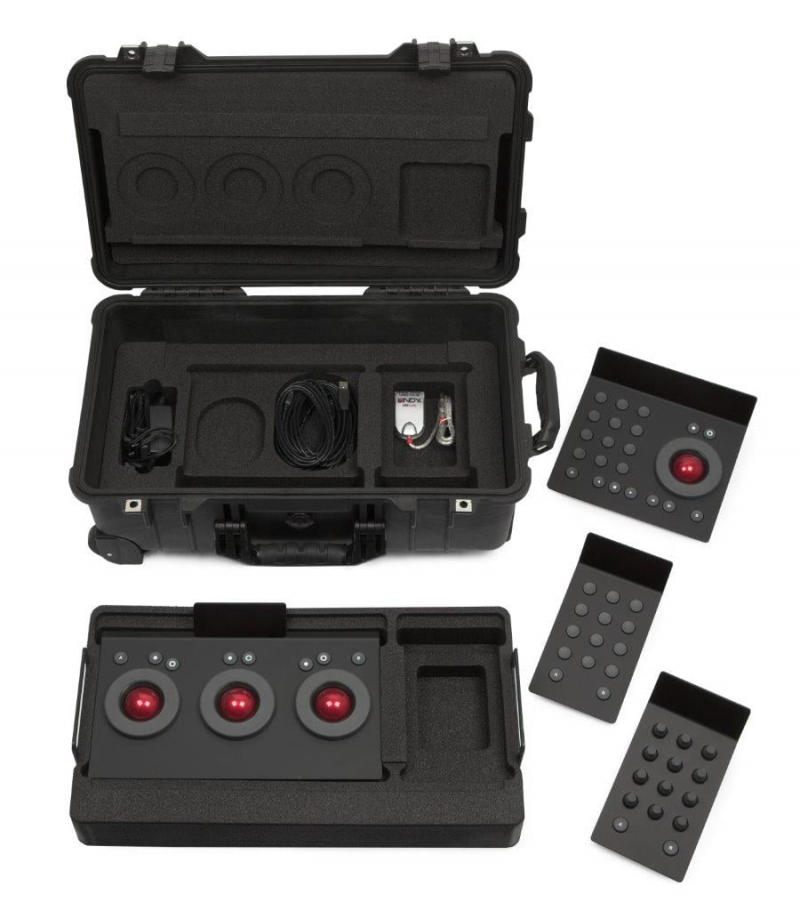-
Posts
257 -
Joined
-
Last visited
Content Type
Profiles
Case studies - Free
Case studies - Premium
Resources
Insider
Courses
Forums
Store
Everything posted by Mazze
-
Hi there, selling my AJA Io XT. Works 100% - barely used. Has also been tested with latest driver v16.1 on M1 Max / macOS Monterey using a TB2 ==> TB3 adapter. Asking 550€ - free shipping inside the EU. Device is located in Munich, Germany. Cheers, Mazze
-
Hi there, selling my AJA T-Tap. Works 100% - barely used. Has also been tested with latest driver v16.1 on M1 Max / macOS Monterey using a TB2 ==> TB3 adapter. Asking 190€ - free shipping inside the EU. Device is located in Munich, Germany. Edit: Sold. Cheers, Mazze
-
Hey friends, we just released v9.4 of SCRATCH, Play Pro, Live Looks and Live Assist. Here's what's in: Main Live FX – Live Composition and Virtual Production. This is a new product and toolset within the Assimilate Product Suite. The product has its own release notes, available here. The product is currently still in a beta phase, where we encourage everybody to participate in. Full support for the Apple M1 Silicon. Editor update. The Editor has a new set of edit modes that align better with existing editors. The drag/drop model for multi-tracks has been improved and includes functions to prevent creating freeze frames by exceeding in-/out point ranges. Note that in the User Preference for the Editor you can switch the option back on to allow range settings beyond a clip's media size. To utilize the HDR capabilities of new computer screens and dual head monitors / tv’s, the advanced settings "Extended Dynamic Range for OpenGL for UI / Dual Head” were added. These settings ensure that the output is not clipped and can be interpreted as HDR. The settings have a slightly different effect on Windows and the Mac. On Windows the effect on the display of the UI controls is slightly more prominent. After enabling advanced setting you update the colorspace and EOTF of the corresponding monitor. For the Mac set the monitor colorspace to the actual colorspace of the monitor (P3, Rec2020) and the EOTF to a Gamma 2.2. On Windows the monitor should be set to sRGB with a Scene Linear EOTF. The operating system will then do proper HDR transform. Color Update to ACES v1.3, including an option in the project settings to select between versions. Existing projects by default stay on v1.1. ACES v1.3 contains a series of new (P3) HDR transforms for different brightness levels. The software uses the Max Luminance settings in the HDR Mastering parameters in the Project Settings to select the suitable transform. Upgraded the OCIO plug-in to use OCIO v2. A Qualifier update with a number of new controls and the controls split over 2 tabs. A new de-noise option as a pre-keyer filter. New Clip White / Black options as post-key operations. The possible range of the Expand option has been substantially increased (do note though that higher values do affect performance). Added a new layer matte Copy blend mode, which causes that the only alpha passed is that which is generated by the layer itself. Added a new Matte Wrap plugin to create a matte for a light-wrap effect. Add the plug-in as matte on a layer after the keyer layer by selecting the Matte section in the Fill/Matte menu before opening the plug-in browser. Navigate the node-tree to get to the plug-in controls to set the size and gain of the Matte Wrap as well as the option to expand it outward or inward (Invert). To indicate even slight changes, the color-balls now show a tint in the middle area when a grade is applied. Added an Unlink colorspace/eotf advanced setting to prevent automatic update of the EOTF when selecting a color space. CIE plot did not always use linear XYZ as input. In the CIE plot settings you can now set both a colorspace and EOTF override used for the CIE plot. Formats / Media Added an "Auto" options for selecting the audio channels when exporting ProRes, DNxHD and H.264/HEVC. When Auto is enabled the number of audio channels being exported is the same as the number of audio channels in the source files. Implemented dynamic per-frame metadata for Sony Raw media which includes e.g. the posture angles (pitch / roll). Video IO / Monitors The Video IO panel can now be opened directly from the start screen. The output latency has been reduced. An advance setting to override the default number of pre-roll frames/buffers for video output was added. Furthermore, a separate Vertical sync option for UI and Dual-Head display was added (previously this was an implicit part of the selected sync mode). The GenLock function on the VideoIO card now automatically uses an external reference clock if available and if it is using the same framerate as the output channel is set to. All output channels are now synchronized. VideoIO devices are now hot-pluggable and settings can be updated while inside a project without the need for a restart. The startup logo and reference monitor splash screen could show too bright on HDR displays. The display now takes into account the EOTF settings for the display. Alternatively you can force the startup logo display in HDR PQ by enabling the corresponding advanced settings. Furthermore, the text display on the splash screen has been improved if the Video IO or Dual Head screen size differs from the UI screen. Note that the changes in the VideoIO setup also had consequences for external applications that use this functionality – like e.g. external software scopes. Check with the vendor of that software if it already supports the new VideoIO interface of the Assimilate Product Suite. Product Specific Play Pro now also shows the Metadata entry panel in the project tree to enter metadata used in various reports. Added the paste options panel, including the Paste Forward function to Play Pro. The record-state did not always come through properly when using Teradek Bolt wireless equipment. You can now specify Teradek as the source (rather than the camera type) to ensure that the Auto record option works. Added Brompton as LUT box option in Live Looks and Live Assist to control the look on a video wall. This function can apply a (LUT) grade to one or multiple Tessera video wall controllers from Brompton Technology. Fix on the image capture function from the IS-Mini 4k LUT box for Live Looks / Live Assist. Tools The Sync-player function can now handle longer computer names (mac-os recently extended the potential size of computer names). This does mean that you no longer can sync with older version systems. Added F1 - F5 function keys to the Remote Control function. These functions can dynamically be assigned to specific functions in the Remote Control panel. Camera The Camera menu has been updated to accommodate various functions for the Live FX toolset. In general these changes do not affect compositions in a post-production / non-live context unless the virtual camera was explicitly used. The main change is that the virtual camera is no longer specified in just a (vertical) Field of View but rather with a Focal Length settings and Sensor Size (width, height and crop), which together determine the Field of View. The default values in the new setup differ from the original Field of View default. The virtual camera position is now specified with an origin position and an offset (which can be animated). The Far-Plane setting in the new setup is dynamically adjusted, which prevent the issue that layers could end up ‘behind’ the far-plane and effectively become invisible with very high resolution media (>8k). Misc Added the SHA1 and xxHash64 checksum options next to md5 in the Construct consolidate. The Consolidate report to show the Checksum type that was used in with the timeline consolidation process. Importing still images automatically get a user defined length. The default length can be set in the Preference panel of the Editor. The Import function of the Animation Editor now allows loading in general csv files with animation data. New Lens (Un)distort plug-in. Update of the camera menu (to align / accommodate various Live FX functions). Playback is no longer stopped when minimizing the app (on Windows - macOS already had the correct behavior). Added a "Relative" option to the layer-Canvas setting. The startup screen now shows more specifically which modules are licensed. Some of the Assimilate plug-ins did not properly pass the alpha of their input. Use Ctrl + Shift + Arrow to move 10 frames. The exact number of frames can be set in the player preferences panel. Search function enhancements where you can specify the metadata item to search for: e.g. 'scene 01a' searches all scene metadata fields for the value 01a* The in/out parameters on the Fill/Matte menu can now show as a timecode. Added the [Note Delete] panel mapping to delete the note of a shot at the current play position. Download from HERE. Something to play around with during the holidays 😉 . Cheers! Mazze 9.4_out_now.psd
-
Depending on how much "bleeds" outside of the P3 gamut, it could simply be RGB vs. YUV. Inside Resolve (or any DI system for that matter, with very few exceptions) all is RGB-based and so is your measurement. When you then render out to a YUV based codec, the encoder used will convert the RGB data to YUV. That conversion might introduce certain "spikes" that reach outside of the defined gamut. Vice versa, when pulling the rendered result back in, the first thing that happens right after the decode, is a YUV to RGB conversion. Effectively you now have two conversions in between your two measurements. You can check against by exporting the original timeline as RGB DPX and pull those back in and analyse. If they are a 100% match (as you're not going to YUV and back again with those) - the culprit lies with the YUV conversion, and can't be avoided. Cheers, Mazze
-
Hey people, as some of you might know, the original foam inserts to fit Tangent's Element panels into a Peli Case 1510 ceased production around 2017 or so and have been unavailable since. Reason enough for me to look into producing them again, as demand was still there. I have now started a small production batch with an estimated shipping date of december 1st. Pre-order (incl. a small discount) is up now and will last until Nov. 28th 🙂 . https://www.angry-face.com/foam-inserts-for-the-peli-case-1510-are-back/ Cheers, Mazze
- 1 reply
-
- 2
-

-
Hi people, we've been working on a new software for virtual production over the past couple of months. As of today, Assimilate Live FX is out in open beta. It does a whole lot of stuff - from compositing over camera tracking to LED wall control and DMX lighting control. We've defined a few workflows that we found made the most sense. But given how much this still is a pioneering field, we also threw in a bunch of tools that help defining custom workflows (which we'd love to hear about and possibly streamline those as well). So, if you wanna know more about Live FX - head over the Assimilate webpage: https://www.assimilateinc.com/products/livefx/ From there you can also register for the open beta. We also created a small tutorials series to get everyone started asap. 6 videso with each being around 10 mins long: https://www.youtube.com/watch?v=YX7Ds7eNFLg&list=PLMHM5FmtrBBOXhjMfaLV7y58fEYSEkDxp&index=2 And if you have any questions - you know where to find me 😉 . Cheers, Mazze
-

Brand new to Scratch, so many questions right off the bat =D
Mazze replied to Rinaldi Ambiroa's topic in Scratch
Hi Rinaldi, on 1) Not sure - it seems to work fine here. What resolution is your footage, what resolution is your timeline / main output node and which other tools (like e.g. scopes) do you have opened, if any? on 2) Note that the scaling in the viewport is not a high quality algorithm. Check the footage on a reference screen or display it 1:1 to judge edges and such. SCRATCH does not make things look nice without being asked - it rather shows what's actually there. on 3) To the left of the playback controls is a button to set playback to once/loop/bounce. Shift + Enter does that as well. Control-clicking that button (or using Ctrl + up/down arrow keys) changes playback speed. Hit "R" (or the Range button to the right of the playback controls) to set the playback range to the current clip. Cheers, Mazze -
Hey everyone, I'm happy to announce that as of today, all Tangent Element panels sold by Angry Face will have a powder coated fine structured finish, instead of the old softcoating! But there’s more – we are proud to present you: The Tangent Element Black Edition! Included in this bundle of powder coated Elements are our black aluminium rings, dark-petrol metallic trackerballs and our custom black rubberized knobs – all for just 2850€ (excl. VAT). And for everyone who already has a set of Elements – we got you covered with our Refurbish offer – incl. optional upgrades for rings, trackerballs and knobs! Cheers! Mazze Here's a few pictures:
-
Hi everyone, here's a tutorial showing how to set up the integration between Hedge and SCRATCH, so after a successfull offload, Hedge will automatically create a timeline inside the SCRATCH project and populate it with the backupped media, so it's ready for QC, audio sync and transcoding. For the engaged DIT, there now is a nicely priced bundle, containing - Live Looks for live grading - Hedge for offload & backup - SCRATCH for dailies transcoding & reporting https://www.assimilateinc.com/products/scratch-for-dailies/ Cheers, Mazze
-
This video is sort of the follow-up tutorial to the one about frame-based metadata and transcoding to OpenEXR. Today we're looking at how to load and conform an EDL from Avid, and automatically pull the vfx-shotnames, which are included in the EDL as markers (or 'locators' if you prefer) and replace the original clipnames with the new vfx-shotnames, before transcoding the camera RAW incl all its metadata to OpenEXR. Good stuff, people. Cheers! Mazze
-
Frame-based metadata and how to forward it from camera RAW into OpenEXR. Enjoy 🙂 . Cheers, Mazze
-
There is something odd going on with NDI under macOS, where it gets a red-ish tint. Has something to do with the YUV conversion as far as I can tell. This is however with any app that uses NDI.
-
Hi all, this video is interesting equally to post, than it is for virtual production. THe Sync Players feature in SCRATCH simply allows to sync the playhead of multiple SCRATCH systems, and control those systems from one master system, playing back different footage to different screens simultaneously. The remote control feature allows to control playback in SCRATCH via a web browser on the local network - for instance on your smartphone. Good stuff. Cheers, Mazze
-
Hi all, this tutorial is about one of SCRATCH's strength: Metadata. Static or frame based, in a burn-in or a report, or in export filenaming. Cheers, Mazze
-
Hi people, this tutorial is about the animation editor in SCRATCH and why it is as awesome as it is. Enjoy 🙂 Mazze
-
Hey people, I'm happy to announce the new refurbish program for Tangent's Element panels 🙂 ! For many users, the panel's surface has become worn down and/or sticky over the years. What we're doing here is to take the panel completely apart, remove the old soft coating and re-lacquer it with a deep black fine-structured powder coat, which should take a couple of ages to wear down again 🙂 . They look & feel is pretty similar to the Blackmagic panels, if you have come across those. Anyways - here is the link and below are a couple of pictures to check out. ==> https://www.angry-face.com/product/angry-face-element-refurbish/ Cheers! Mazze
-
Hi people, this tutorial is purely about the SCRATCH timeline (called 'CONstruct' back in the day). What many do not know: It has 3 dimensions 😉 . Once you understand how it works, it can be a huge time saver and organizational help. Cheers, Mazze
-
Hey peoples, since the original foam inserts for the Element panels (see pictures below) are not being made anymore and have been unavailable for the past 2 years, I am considering to produce them again in a small production batch. Estimated price is 200€ (excl. VAT) + shipping for one set. The original foam inserts were priced at 175€ (excl. VAT). The Peli case itself is not included! I am about to make a prototype in the next couple of weeks, but to actually produce them, I'd need at least 5 pre-orders. If you're interested, drop me a line via PM, or email (mazze (at) angry-face.com). Thanks! Mazze
- 1 reply
-
- 1
-

-
Precisely 😉 . Well, yes - it does not look great. But then again... it didn't look particularly stellar before either .
-
About the sticky surface, there's two things you can do: 1) Apply talkum powder (or baby powder - that has the advantage of it smelling nice 😉 ) https://www.angry-face.com/sticky-surfaces/ This however is only temporary, and you need to make sure no powder gets under the rings into the ball bearings. 2) Wash the soft coating down with Isopropyl alcohol and potentially relacquer the fascia. https://www.angry-face.com/avid-artist-panel-refurbish/ Cheers, Mazze
-
The Euphonix and Avid panels are 100% identical, except for the label printed onto the device. They should work fine generally with any recent macOS/Windows version. What is unclear at this point is whether they will continue to work with Apple's M1 ARM processors. Avid has not yet updated the SDK for the ARtist Controllers. As not all controllers are EOL (like the ARtist Color is since december last year), I think there is an update to be expected, that will add M1 compatibility. Whether that SDK however then will still support EOL controllers, is yet to be seen. Cheers, Mazze
-
I can see these questions have already been answered on LGG. But just for completeness: Notes can be added via metadata stack inside ColorFX and the navigation can be switched to navigate between notes. For the panel mapping, go to ColorFX ==> Settings (F5) ==> General ==> Panel mapping. In there, each mapping pair has a scale and an acceleration value. Change those to adjust the sensitivity of any control. Cheers, Mazze
-

Introduction to Visual Effects in SCRATCH
Mazze commented on Lowepost's insider article in Color Grading
I can see these questions have already been answered on LGG. But just for completeness: Notes can be added via metadata stack inside ColorFX and the navigation can be switched to navigate between notes. For the panel mapping, go to ColorFX ==> Settings (F5) ==> General ==> Panel mapping. In there, each mapping pair has a scale and an acceleration value. Change those to adjust the sensitivity of any control. Cheers, Mazze -
Yep - it's called Reverse Assemble. You would add a frame reference to the tray and from there recall its grade. Cheers, Mazze



